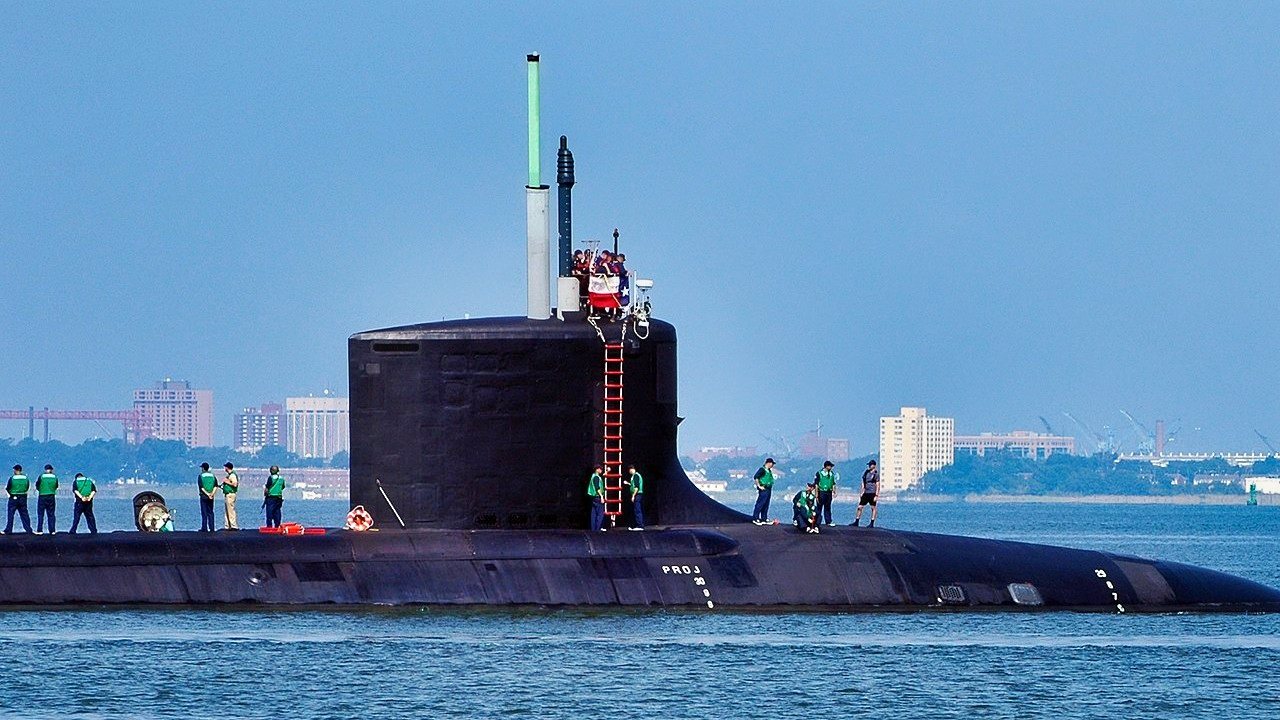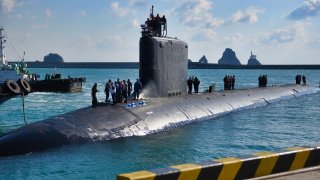Virginia-Class: The U.S. Navy Submarine Built to Fight China
The Virginia-class Block V submarines, considered more affordable and advanced than the Seawolf-class, are essential for any sort of conflict with China.
Top 4 Points - What You Need to Know About the Virginia-Class: The U.S. Navy needs a large fleet of advanced attack submarines to counter anti-access/area denial (A2/AD) systems developed by rivals like China and Russia.
-The Virginia-class Block V submarines, considered more affordable and advanced than the Seawolf-class, are essential for this role.
-However, the Navy recently canceled one of these submarines from its 2025 budget request, citing industrial and funding challenges. The Block V subs are designed to operate in contested littoral waters, such as the South China Sea, and are equipped for stealthy, long-range missile strikes.
-Despite their importance, the Navy is not building enough of these submarines to maintain its power projection capabilities.
Why the U.S. Navy Needs More Virginia-Class Block V Submarines
The U.S. Navy requires a large fleet of advanced attack submarines if it is to project power. This is because rivals such as China, Russia, Iran, and North Korea – and even non-state threats like the Yemen-based Houthi rebels – are building anti-access/area denial (A2/AD) defensive systems. These are designed to prevent traditional U.S. power projection platforms such as the aircraft carrier from approaching contested territories, thereby negating the U.S. military’s ability to deter these rivals.
With only a handful of the expensive and complex Seawolf-class attack submarines on hand, the Navy has come to rely on the newer Virginia-class Block V submarines.
These systems, costing $4.3 billion per unit to build, are considered more affordable than the Seawolf and just as advanced.
The Navy had been building an average of two Virginia-class subs per year. But, much to the shock of many defense experts, the Navy canceled one of the Virginia-class submarines from its requests for Fiscal Year 2025, citing a “struggling industrial base and stifled procurement funding stemming under Congressional spending caps.”
Not to worry, though, the Navy continues blowing its budget on the $13 billion Ford-class aircraft carrier, which is likely to be kept out of any fight with China out of fear of what Beijing’s A2/AD capabilities could do to it.
The Navy has been explicit about its need to expand the attack submarine fleet, but it has consistently failed to accomplish this worthy goal. Considering steady advances in China’s A2/AD systems, and the aforementioned “struggling industrial base” here in America, the Navy needs to start moving much faster toward the goal. Otherwise its ability to project power will be seriously diminished.
What is the Block V Virginia-Class Submarine?
The Virginia-class Block V submarine allows the Navy to project power deep inside an enemy’s A2/AD bubbles. It is likely the best U.S. Navy attack submarine ever built to date.
These submarines can carry out devastating missile strikes at long range. Because they possess what many experts refer to as acoustic dominance, they can evade detection far better than any other submersible platform.
Meanwhile, the Block V Virginia class’ fly-by-wire control system allows the ships to operate more safely in shallower waters. The South China Sea and Taiwan Strait are considered far shallower than other locations U.S. submarines operate, making the fly-by-wire system key to ensuring safe operations while the submarines maneuver in those contested regions.

This class of submarine can carry up to 37 torpedo-sized weapons. The Block V has an expanded vertical launch system that can accommodate 28 projectiles, namely the Tomahawk cruise missile. The new Tomahawks being outfitted to the Block V possess an anti-ship missile capability, as well as their traditional land-attack mode.
Lastly, the submarine has a reconfigurable torpedo room that can substitute as a preparation area for large U.S. Special Forces teams. These commandos can store themselves and their equipment in this part of the submarine. Once the submarine reaches its destination, the operators can stealthily maneuver themselves off the vessel and move toward their targets.
These Subs Were Meant to Fight—and Defeat—China
Virginia-class Block Vs are designed for more efficient combat operations in littoral waters. In other words, these subs can get close to the enemy and blitz the bejesus out of them in ways that aircraft carriers and their attendant air wings will be unable to do if A2/AD systems are present and effective. The Virginia class was meant to wage war on China. Yet the Navy continues to shortchange itself by refusing to build sufficient numbers of these systems.
Inevitably, the Navy will realize how essential this submarine is to win the next war. Sadly, it doesn’t seem like anyone in Washington cares or understands what’s happening to the U.S. Navy.
Author Experience and Expertise: Brandon J. Weichert
Brandon J. Weichert, a National Interest national security analyst, is a former Congressional staffer and geopolitical analyst who is a contributor at The Washington Times, the Asia Times, and The-Pipeline. He is the author of Winning Space: How America Remains a Superpower, Biohacked: China’s Race to Control Life, and The Shadow War: Iran’s Quest for Supremacy. His next book, A Disaster of Our Own Making: How the West Lost Ukraine, is due October 22 from Encounter Books. Weichert can be followed via Twitter @WeTheBrandon.
All images are Creative Commons or Shutterstock.
From the Vault
Russia Freaked Out: Why the U.S. Navy 'Unretired' the Iowa-Class Battleships
Battleship vs. Battlecruiser: Iowa-Class vs. Russia's Kirov-Class (Who Wins?)


